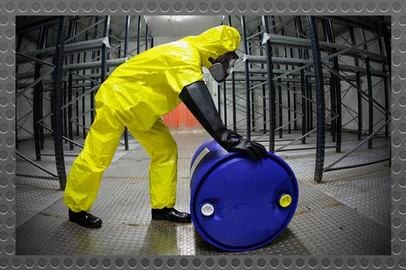- About Us
- Our Services
- Training Expertise
- Crisis Management for Business & Industry
- DOT PHMSA ALERT Rail Car Training
- Emergency Management
- Environmental & HAZMAT
- First Response & HAZWOPER
- Maritime Security
- OSHA Training/Confined Space
- RDPC
- Safer News Gathering
- Safer Ohio Schools Using Threat Assessment Management
- School Safety & Security
- Workplace Violence Prevention
- Courses
- Our Clients
- Media
Hazmat Handlers Must Think Locally

What is your relationship to your community’s hazmat response team? If you are a hazardous materials producer, handler, or transporter it is very wise to regularly interface with the local authorities who would respond to a hazmat emergency in your area. Should a spill or release involve cargo used in your processes, the incident may be easier to contain if your local response teams can easily communicate with your EHS staffers, and already fully understand the nature of your operations.
Local hazmat teams depend on OSHA-mandated Tier II forms, which are required of facility operators who store hazardous materials. These forms are submitted to the Local Emergency Planning Committee (LEPC) and the fire department. Community hazmat teams will surely involve those two agencies, and may include others, including law enforcement or local offices for environmental protection, at either state or federal levels.
But, as Randall Hanifen recently pointed out in EDM Digest, Tier II forms reflect the materials stored in the year prior to submission, “so the current quantity and type of chemicals in storage (may) vary greatly.” Facilities with notable changes in hazardous material types or quantity will more completely serve their communities and themselves if they notify the LEPC and fire departments when such changes occur.
The responding agencies also depend upon the findings of a Commodity Flow Study (CFS) to tell them what local infrastructure is used for the transportation of hazardous materials. This study includes highways, residential streets, rail lines, waterways, and other conduits for the movement of hazardous materials to and from industrial facilities. A CFS is not necessarily conducted annually, or even often. The Guidebook for Conducting Local Hazardous Materials Commodity Flow Studies (Transportation Research Board, 2011) calls Commodity Flow Studies “a static picture of an ongoing process”, and notes that “Communities with complex flows may find it necessary to revise the CFS frequently, while those with less complex flows may find that a well-done HMCFS can last for years.”
This variable frequency of the CFS can be a hindrance to emergency responders. If a local facility changes their mode of hazmat transportation from railway to highway, and the facility is located near a residential area, the materials in question may be transported through densely populated neighborhoods before they reach a faster thoroughfare (where the rail lines might lead away from nearby homes). Even after proper DOT filing, this kind of change would certainly merit a conversation with the facility’s nearby response managers.
Local hazardous response teams are built on what community administrators know about facilities and routes in their area. The data they gather when building teams determines the scale of the response group, where it will be headquartered, and how it is funded. If the information they rely upon is not consistent with the actual state of materials use and transportation in their jurisdiction, there is the danger of an insufficient response in the event of a calamity. Many times, a sufficient response is achieved with the help of teams from other communities – but those communities also should be aware that their services are more likely to be called upon thanks to a facility owner changing their processes.
Findlay All Hazards’s hazmat training workshops and consulting services stress communication between your EHS staff and all applicable local responders, above and beyond what may be required by OSHA or other regulators.
